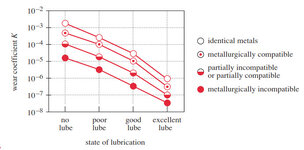SwaggingIt
Mechanical
- Oct 31, 2014
- 21
I'm working on a flight controls actuator and since I'm fairly new to the arena I'm not familiar with best practices.
Theres been questions raised that a few of our highly loaded bearings (towards the flight surface output) should have steel sleeves around them because they are in aluminum housing. I understand that this might potentially mitigate thermal and aluminum housing wear, but I was really hoping to get more experienced people to chime in with their opinions or what kind of analyses they run to determine the necessity of the steel sleeves.
Space is tight in the actuator so adding these sleeves wont be easy. Plus, the steel sleeves need to be press fit into the aluminum housing, and then the sleeve ID needs to be machined to match the bearing OD, so this is adding extra process too.
Very grateful for any advice/opinions. I take everything with a grain of salt so please dont hesitate to offer any suggestions.
Theres been questions raised that a few of our highly loaded bearings (towards the flight surface output) should have steel sleeves around them because they are in aluminum housing. I understand that this might potentially mitigate thermal and aluminum housing wear, but I was really hoping to get more experienced people to chime in with their opinions or what kind of analyses they run to determine the necessity of the steel sleeves.
Space is tight in the actuator so adding these sleeves wont be easy. Plus, the steel sleeves need to be press fit into the aluminum housing, and then the sleeve ID needs to be machined to match the bearing OD, so this is adding extra process too.
Very grateful for any advice/opinions. I take everything with a grain of salt so please dont hesitate to offer any suggestions.


